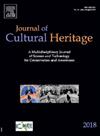Pitfalls of dye identification in historical fabrics
IF 3.5
2区 综合性期刊
0 ARCHAEOLOGY
引用次数: 0
Abstract
This publication presents challenges in dyes identification in archaeological and historical fabrics. The following key points are discussed. These points were highlighted in the course of the analyses of 180 samples of archaeological and historical fabrics dyed with various dyes analysed in our laboratory using high-performance liquid chromatography coupled with tandem mass spectrometry (HPLC/MS/MS). These key points are: (i) the sample preparation procedure that does not lead to the changes in the composition of the sample and, consequently, to distortions of the analysis results; regardless of whether strong or weak acid was used to hydrolyze, the conjugated compounds were not completely degraded, and it was still possible to identify the source of the dye; (ii) the representativeness of the sample; the percentage of dye in the analysed sample could be a significant factor in the interpretation of the results and it seems to be more important than the sample size; (iii) the possible cause why the materials used for the preservation of fabrics during the conservation works may affect the credibility of the analysis; the additives in fibre treatment or the dyeing process could be identified, and they can interfere when the high-sensitivity instrumental analysis is used; (iv) the problem of the quantification of the residual dye in the archaeological and historical fabrics, especially when working with degraded fabric; furthermore, it is essential to consider that the quantitative determination of the dye in the sample reflects its concentration in the solution; (v) the reliability of the results strongly depends on the fabric degradation; it is recommended that samples be taken, if feasible, from well-preserved sections that have not been subjected to contamination or ultraviolet radiation exposed.
历史织物染料鉴定的误区
本出版物提出了在考古和历史织物染料鉴定的挑战。讨论了以下要点。在我们的实验室使用高效液相色谱-串联质谱(HPLC/MS/MS)对180件用不同染料染色的考古和历史织物样品进行分析的过程中,这些观点得到了强调。这些关键点是:(i)样品制备过程不会导致样品组成的变化,从而不会导致分析结果的扭曲;无论用强酸还是弱酸水解,缀合物都没有完全降解,仍然可以确定染料的来源;(ii)样本的代表性;分析样品中染料的百分比可能是解释结果的一个重要因素,它似乎比样本量更重要;(iii)在维修工程期间,用于保存布料的材料可能会影响分析的可信度的原因;在高灵敏度仪器分析中,纤维处理或染色过程中的添加剂可以被识别,但它们会产生干扰;(iv)考古和历史织物中残留染料的定量问题,特别是在处理退化织物时;此外,必须考虑样品中染料的定量测定反映了其在溶液中的浓度;(v)结果的可靠性在很大程度上取决于织物的降解;如果可行的话,建议从没有受到污染或紫外线照射的保存完好的部分中取样。
本文章由计算机程序翻译,如有差异,请以英文原文为准。
求助全文
约1分钟内获得全文
求助全文
来源期刊

Journal of Cultural Heritage
综合性期刊-材料科学:综合
CiteScore
6.80
自引率
9.70%
发文量
166
审稿时长
52 days
期刊介绍:
The Journal of Cultural Heritage publishes original papers which comprise previously unpublished data and present innovative methods concerning all aspects of science and technology of cultural heritage as well as interpretation and theoretical issues related to preservation.
 求助内容:
求助内容: 应助结果提醒方式:
应助结果提醒方式:


